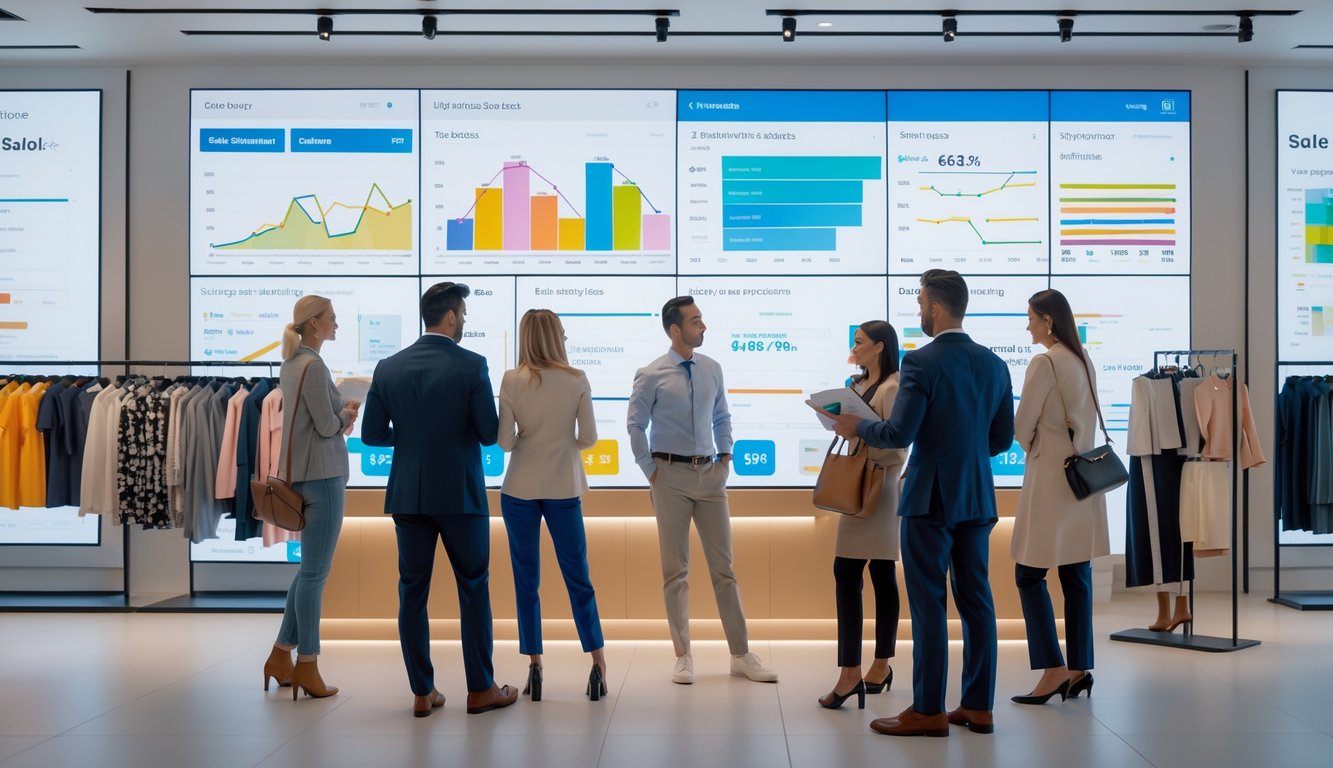
Inventory Management and Sell-Through Rates
I spent all last week digging through markdown reports—inventory chaos never actually gets less weird. Stuff that vanished in a day last month now just sits there, even with 30% off stickers. Trying to keep sell-through above 85% is like running a marathon at sprint speed. Nobody tells you how fast trends die until you’re knee-deep in unsold neon cardigans.
Excess and Unsold Inventory Challenges
Forecasting what’ll be cool next month? Good luck. Sometimes a shipment’s late, sometimes trends shift, sometimes the “it” item is suddenly the “no thanks” item. Zara, for example, just yanks slow sellers into markdown bins within a month or so. Honestly, I wish I could be that ruthless.
Dead stock is the real nightmare. Shelves fill up, budgets get squeezed, warehouse guys start using old shoes as doorstops (not even kidding). Carrying just 10% extra inventory can wipe out your profit for the whole season. And when someone suggests a “warehouse clearout,” it never actually clears anything out. Why do we even bother?
Clearing Overstock Efficiently
One minute I’m fine, next minute half my SKUs are clearance. Dynamic repricing software spits out new discounts every day. Some days I feel like I’m running a mini Wall Street, not a retail shop. Retailers keep telling me to do multi-channel clearance: toss stuff in the in-store bins, run online flash sales, blast SMS to people who bailed on checkout. Sure, but then what?
If you just slash prices, you train customers to wait. Then you’re “that store with all the sales”—not exactly the dream. I’ve watched full-price sell-through crater after a couple back-to-back clearances. It’s brutal. And it’s always our own fault.
Sell-Through and Inventory Turnover Metrics
Metrics? Ugh. The sell-through report is my personal horror movie. If you don’t track it obsessively, slow stuff just disappears into the abyss. Hit 85% sell-through, you’re a hero. Drop below 60%, suddenly every meeting’s about clearance, not new launches.
The pros look at more than just units sold—GMROI, days of supply, turnover ratios. Fast turnover means cash flow, less storage, fewer headaches. I love a dashboard that flashes red at underperformers. If you wait for end-of-season numbers, you’re already toast.
The Role of Sales Data and Predictive Tools

I swear, markdowns used to feel random, but now the price drops hit right where I’m clicking “favorite.” I almost missed it—everything’s faster. There’s no secret committee in the back room throwing darts at a wall of jeans. It’s just data. So much data.
Historical Sales and Analytics
Back when I scribbled sales by hand (never again), I had no idea I’d end up shoveling all that into some predictive model. Historical sales are like a retail diary—every flop, every surprise sellout, it’s all there. “What’s old is new,” but now it’s timestamped and nobody can fudge the numbers.
People act like “advanced analytics” is just Excel with a facelift. It’s not. With enough data, I can spot the exact day people stopped caring about blue t-shirts. True story: weekday patterns made me rethink Sunday markdowns because jogger sales spiked on Saturdays. McKinsey said stores using analytics for markdowns raise margins by 2–5%. That’s…something, right?
Leveraging Predictive Analytics
Predictive analytics is basically crystal ball cosplay, but with way more spreadsheets. It’s not just about bestsellers—it’s about catching weird blips (like, why did floral midi skirts explode in May?) and dropping prices at the exact right moment. Retail Next said 74% of big retailers changed their markdowns because of predictive models last year. That’s a lot.
I totally botched it once—thought rain boots would flop after March, but April was a monsoon and the algorithm called me out. Adjusted pricing, moved 400 pairs I’d written off. Sometimes I feel like it’s too much data, but then I see sell-through jump 12% after a “targeted” markdown. I just nod and pretend I planned it. If the model says red hoodies are dying, I cut the price and deal with the buyer fallout later.
Consumer Experience and Loyalty Impacts

Clearance racks never make sense. Ever. Brands hype up must-have styles, then slash the price, and suddenly loyalty programs and “personalized CX” get super confusing and, honestly, kind of fascinating. Or maybe that’s just me.
Enhancing the Customer Experience
Scoring jeans I’ve stalked for weeks on markdown shouldn’t feel like winning the lottery, but it does. Deloitte Digital says 73% of shoppers want tailored rewards, but less than half of brands even bother. I get three push notifications a week for “exclusive markdowns” on stuff I just browsed. Creepy? Or genius? I can’t decide.
Switching between app and in-store is a mess. Retail analysts love to say “journey orchestration” like it’s a real thing, but half the time, I get mismatched recs and glitchy checkout. I bail. Nobody comes back for generic discounts—unless it feels personal, I’m out.
Building Customer and Brand Loyalty
Loyalty? Ha. Nobody’s loyal. Millennials and Gen Z drop brands the second a better deal pops up. McKinsey says value and convenience beat loyalty every time, even if the last reward was cool.
Being in a loyalty program now just means more generic emails, fewer points, and “exclusive” drops that are just clearance dumps. A CX architect told me, “Brands think VIP means more emails—customers want actual rewards.” Is that realistic? Maybe, if anyone could make the data work.
Sometimes, though, it works. One markdown on my favorite T-shirt and I’m back in the app, card in hand. Not because I love the brand. Just habit. Or boredom. Or maybe—sometimes—actual trust. I delete the app anyway.



